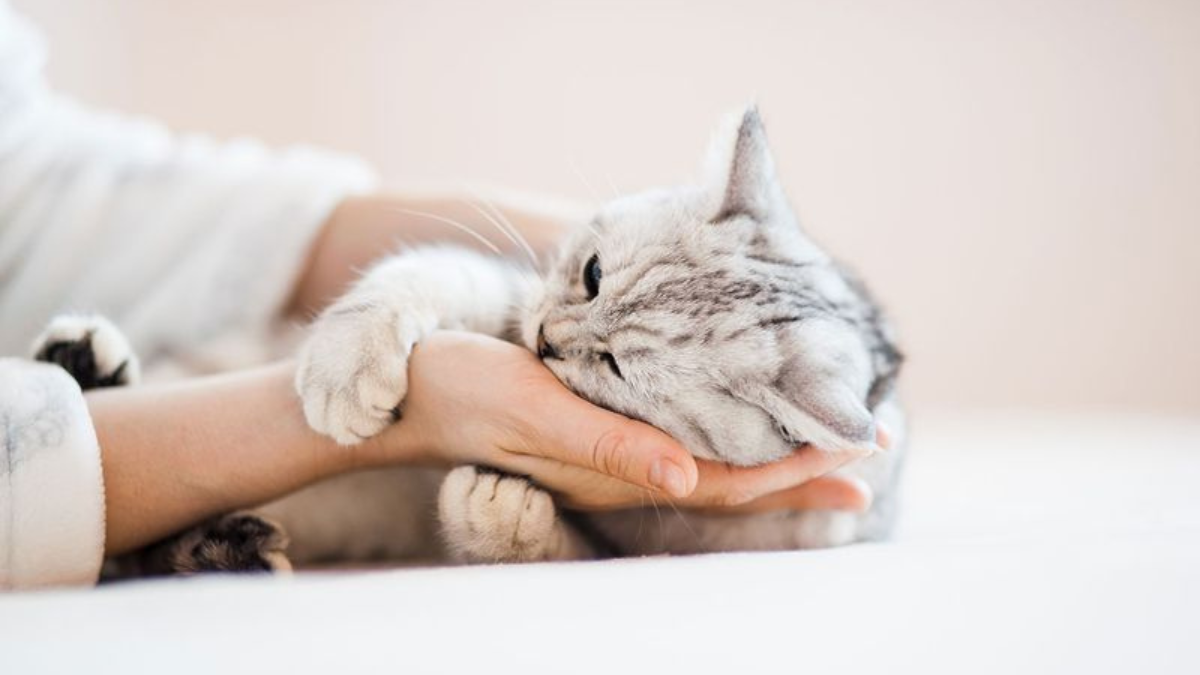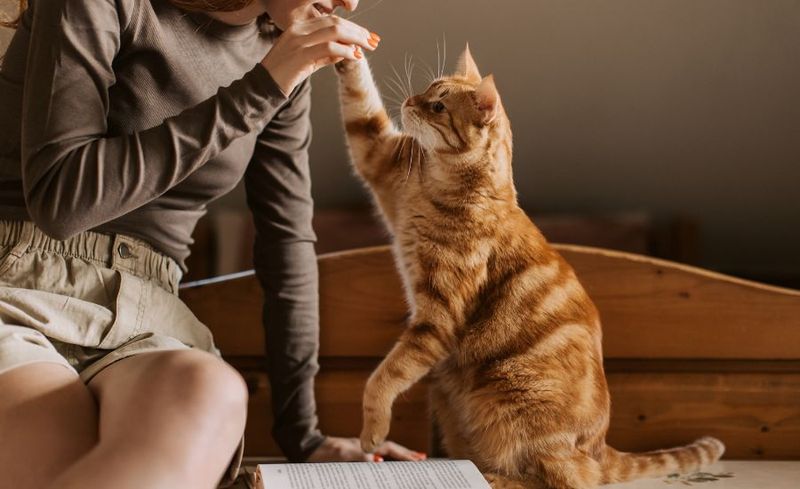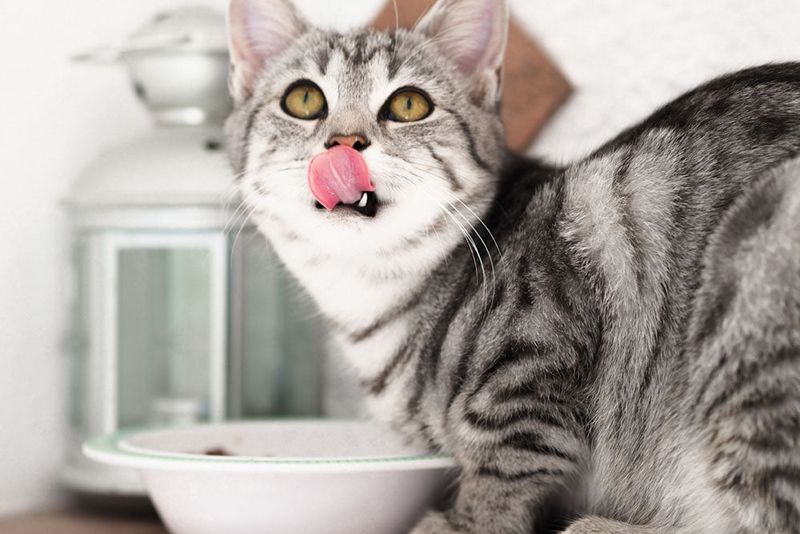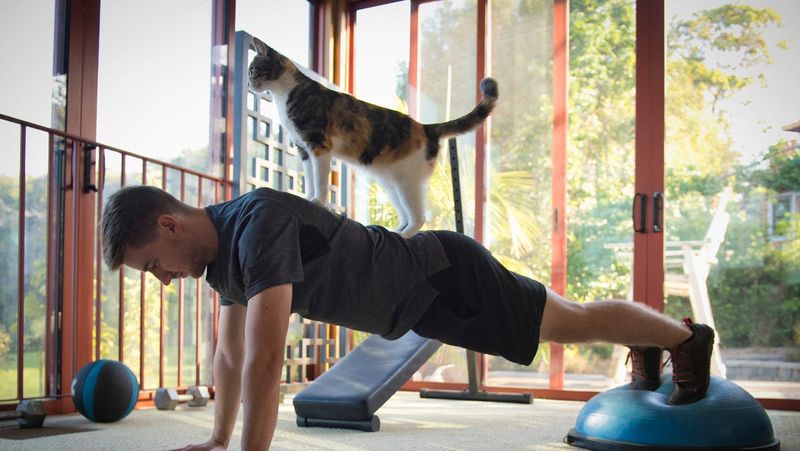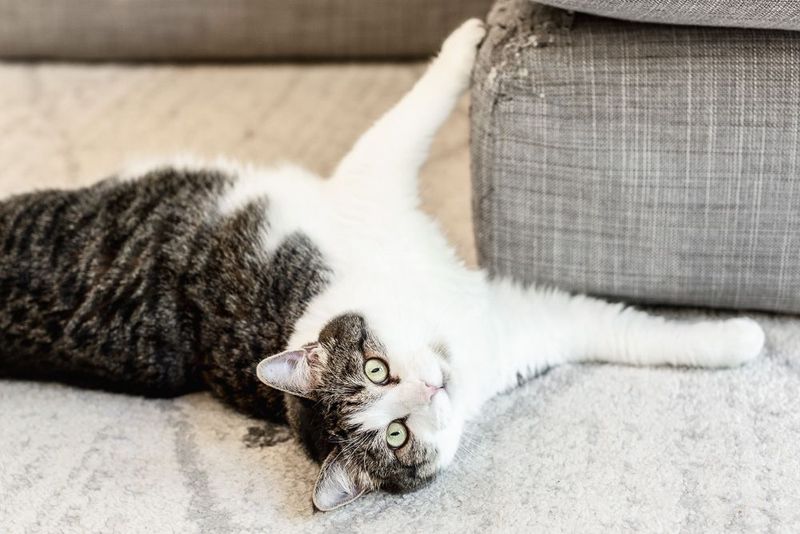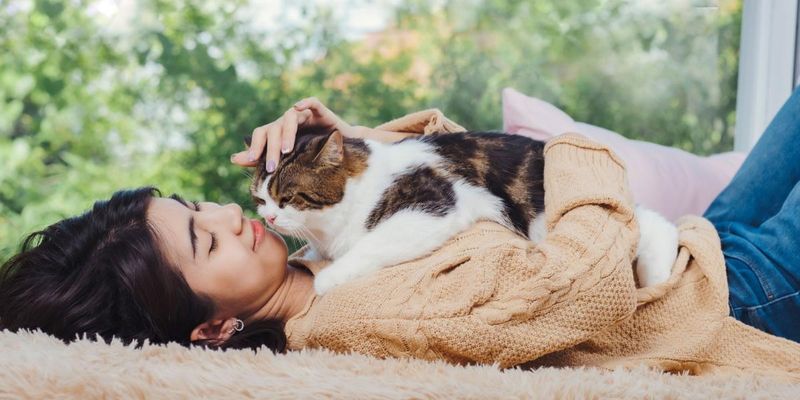📖 Table of Content:
Have you ever observed your cat mirroring your actions or behavior? From curling up next to a book while you read to offering a disapproving stare when you make a questionable decision, cats seem to reflect their owners in uncanny ways. Research has shown that pets often adopt traits from their human companions, reflecting shared personalities.
This fascinating connection between humans and their feline friends goes beyond mere coincidence. Cats tend to pick up on their owners’ moods, habits, and even subtle mannerisms. As a result, these furry companions become more than just pets—they become a reflection of their owners’ personalities.
The idea that pets mimic their owners’ behavior isn’t just a quirky observation, but a phenomenon backed by science. Cats, in particular, are highly attuned to their human’s emotional state and actions. Over time, they seem to mirror their owners, from their actions to their idiosyncrasies, creating a bond that feels deeply personal.
1. Morning Routines Match
Early birds have early-bird cats. If you bounce out of bed ready to tackle the day, your cat might be the one meowing at 5 AM, pawing at your face because breakfast can’t wait. The opposite holds true too.
Night owls often have cats who come alive when the sun goes down, racing through the house while you’re binge-watching shows. Your shared energy patterns aren’t coincidental – cats adapt to their humans’ schedules.
Research shows that pets synchronize their daily rhythms with their owners over time. Your furball has basically become your biological clock twin!
2. Social Butterfly or Lone Wolf
Cats have a reputation as independent creatures, but their social preferences often mirror yours. Extroverted people tend to have more outgoing cats who greet visitors and demand to be the center of attention at parties.
Introverts frequently find themselves with cats who hide when the doorbell rings. These feline companions prefer quiet evenings and one-on-one bonding time with their trusted human.
Your cat’s reaction to strangers isn’t just random behavior. They’ve learned from watching you whether new people are exciting opportunities or potential threats to peaceful solitude.
3. Food Enthusiasm Levels
Does your cat do a happy dance at mealtime? Food-motivated felines often belong to humans who appreciate a good meal. The excitement your cat shows for dinner might match your own enthusiasm for trying new restaurants or cooking special dishes.
Picky eaters tend to have finicky cats. If you’re selective about what goes on your plate, don’t be surprised when your cat sniffs suspiciously at new foods.
The connection goes deeper than learned behavior. Studies suggest that stress around food and eating patterns can transfer from owners to pets, creating similar approaches to mealtime in both species.
4. Stress Response Similarities
Nail-biting, hair-twirling humans often have cats who engage in similar nervous behaviors. Your cat’s excessive grooming or twitchy tail might mirror how you handle stressful situations.
Cool-as-cucumber people typically have more relaxed cats. These felines rarely get worked up over small changes in their environment, just like their unflappable owners.
This mirroring happens because cats are incredibly sensitive to our emotional states. They pick up on subtle changes in our body language, voice, and even scent when we’re stressed. Over time, they develop coping mechanisms that echo our own response patterns.
5. Activity Level Coordination
Fitness enthusiasts often have energetic cats who race around the house and pounce on toys with athletic precision. These cats seem perpetually ready for action, just like their workout-loving owners.
Couch potatoes frequently find themselves with cats who perfect the art of lounging. These feline friends can spend hours in one sunny spot, moving only when absolutely necessary – much like their humans on a lazy Sunday.
Your shared activity preferences aren’t just a coincidence. Cats adapt to the energy level of their environment and learn what behaviors get positive reinforcement from you, gradually syncing their activity cycles to match yours.
6. Cleanliness Standards
Neat freaks often have immaculate cats who spend hours grooming. These pristine felines use their litterbox with surgical precision and might even bury food they consider messy.
More relaxed housekeepers tend to have cats with a casual approach to cleanliness. These are the cats who track litter across the floor and couldn’t care less about the occasional clump in their fur.
Your shared cleanliness values develop through a combination of temperament and learning. Cats observe our reactions to messes and adapt accordingly. Plus, your cleaning habits directly impact their environment, reinforcing similar behaviors in your furry friend.
7. Communication Styles Match
Chatty people often have vocal cats who meow constantly. These talkative felines have learned that verbal communication gets results in their household, just as their humans have discovered.
Quiet, reserved individuals frequently find themselves with silent cats who communicate through subtle body language. These cats might use a gentle paw tap instead of a meow to request attention.
Your shared communication preferences develop naturally through daily interactions. Cats are masters at figuring out what works to get what they want. If you respond better to loud requests, they’ll become louder. If you notice subtle cues, they’ll become more understated in their demands.
8. Attitude Toward Rules
Rule-followers often have cats who respect boundaries. These well-behaved felines stay off counters, don’t scratch furniture, and come when called – reflecting their humans’ appreciation for order and structure.
Free spirits frequently find themselves with rebellious cats. These boundary-pushing pets seem to delight in knocking things off shelves while maintaining direct eye contact with you.
Your shared approach to rules isn’t random. Cats pick up on how consistently you enforce boundaries and how you react when rules are broken. They’re also naturally drawn to humans whose energy matches their own, creating a mutual reinforcement of similar personality traits.
9. Affection Display Parallels
Huggers and cuddlers tend to have physically affectionate cats. These loving furballs want to be in your lap, on your chest, or wrapped around your neck like a living scarf – mirroring how freely you give physical affection.
More reserved people often have cats who show love from a distance. These cats might sit near you but not on you, occasionally blinking slowly to signal their affection without the touchy-feely stuff.
Your shared affection style develops through mutual comfort levels. Cats learn how much physical contact you welcome and adjust accordingly. They’re also naturally drawn to humans whose personal space boundaries match their own preferences.
10. Adaptability to Change
Flexible people who roll with life’s punches often have adaptable cats. These easy-going felines handle new furniture, visitors, or schedule changes without drama – just like their go-with-the-flow humans.
Those who struggle with change frequently find themselves with cats who hide for days after the slightest disruption. Move their food bowl two inches to the left? Prepare for feline meltdown.
Your shared adaptability level develops through a combination of temperament and learned behavior. Cats observe how we react to changes in our environment and take cues from our stress responses. Over time, they develop similar thresholds for handling life’s unexpected twists.
